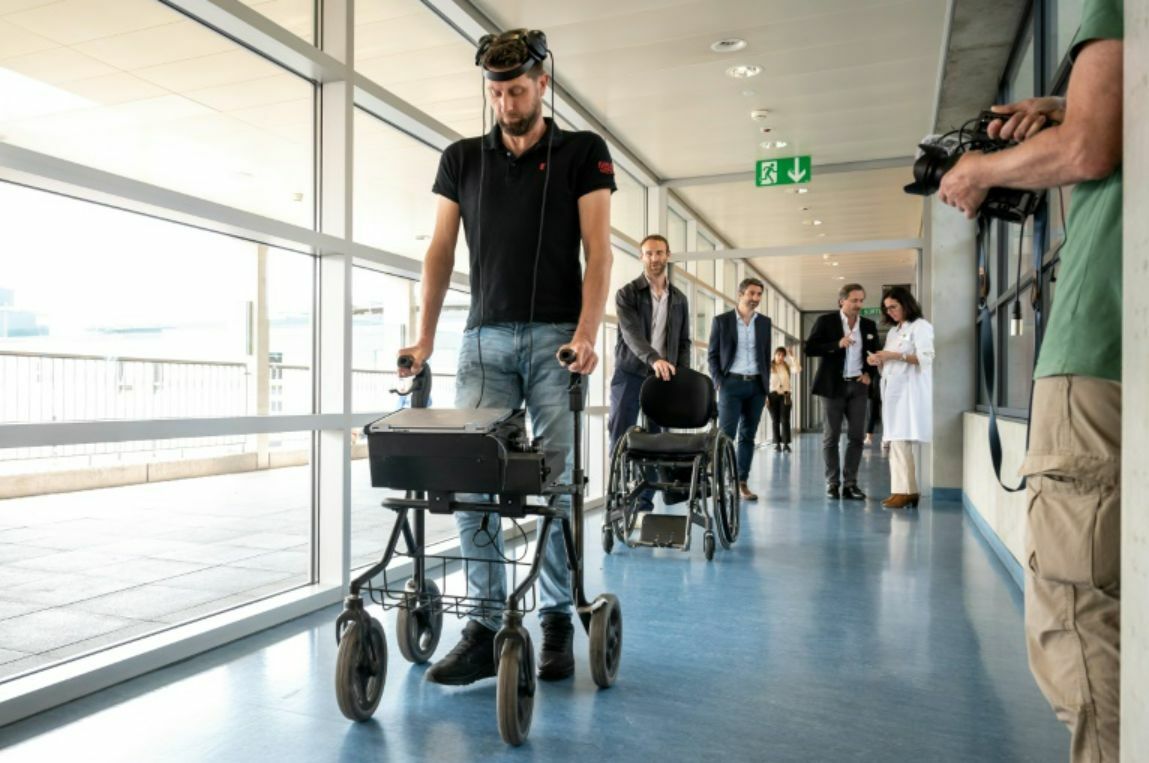Paralysed man walks using thoughts with breakthrough brain-spinal cord implants

A paralysed man has successfully regained the ability to walk using only his thoughts, thanks to two innovative implants that have re-established communication between his brain and spinal cord. The breakthrough has given the 40-year-old Dutch patient, Gert-Jan, newfound freedom after being paralysed in his legs for over a decade due to a spinal cord injury from a cycling accident.
The groundbreaking system allows Gert-Jan to walk “naturally,” navigate challenging terrain, and even climb stairs, as reported in a study published in the journal Nature. The achievement is the culmination of more than ten years of research by a team of experts in France and Switzerland, reports Bangkok Post.
The researchers had previously developed a spinal cord implant that sends electrical pulses to stimulate movement in leg muscles, enabling three paralysed patients to walk again. However, this earlier system required the patients to press a button each time they wanted to move their legs. Gert-Jan, who also has a spinal implant, found it challenging to achieve a “natural step” using this method.
The latest research combines the spinal implant with a new brain-computer interface, which is implanted above the part of the brain that controls leg movement. The interface utilises artificial intelligence-based algorithms to decode brain recordings in real-time, allowing it to determine how the patient wants to move their legs at any given moment. The information is then transmitted to the spinal cord implant via a portable device, enabling patients to move around without assistance.
The two implants create a “digital bridge” that reconnects the brain and spinal cord, allowing Gert-Jan to walk as soon as he thinks about it. After undergoing invasive surgery twice to implant both devices, Gert-Jan said it has “been a long journey to get here,” but he is now able to stand at a bar with friends while enjoying a beer, a simple pleasure that represents a significant change in his life.
According to Gregoire Courtine, a neuroscientist at Switzerland’s Ecole Polytechnique Federale de Lausanne and a study co-author, this development is “radically different” from previous accomplishments. “Previous patients walked with a lot of effort — now one just needs to think about walking to take a step,” he said.
After six months of training, Gert-Jan also recovered some sensory perception and motor skills that he had lost in the accident, even managing to walk with crutches when the “digital bridge” was deactivated. Guillaume Charvet, a researcher at France’s CEA, believes this indicates that establishing a link between the brain and spinal cord could promote a reorganisation of neuronal networks at the injury site.
While it will take “many more years of research” before this technology is available to paralysed people worldwide, the team is already preparing a trial to study whether it can restore function in arms and hands. They also hope the technology could apply to other issues, such as paralysis caused by stroke.
Latest Thailand News
Follow The Thaiger on Google News:


























